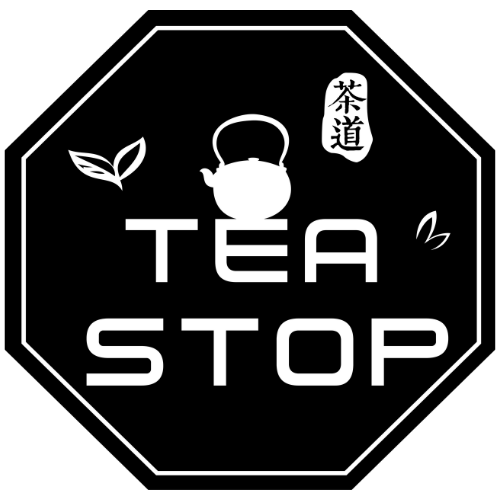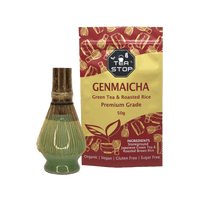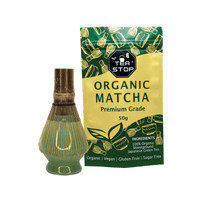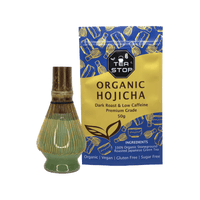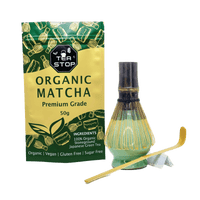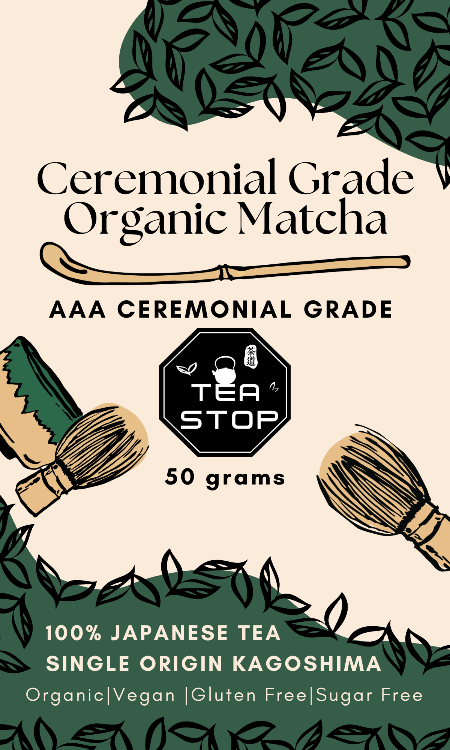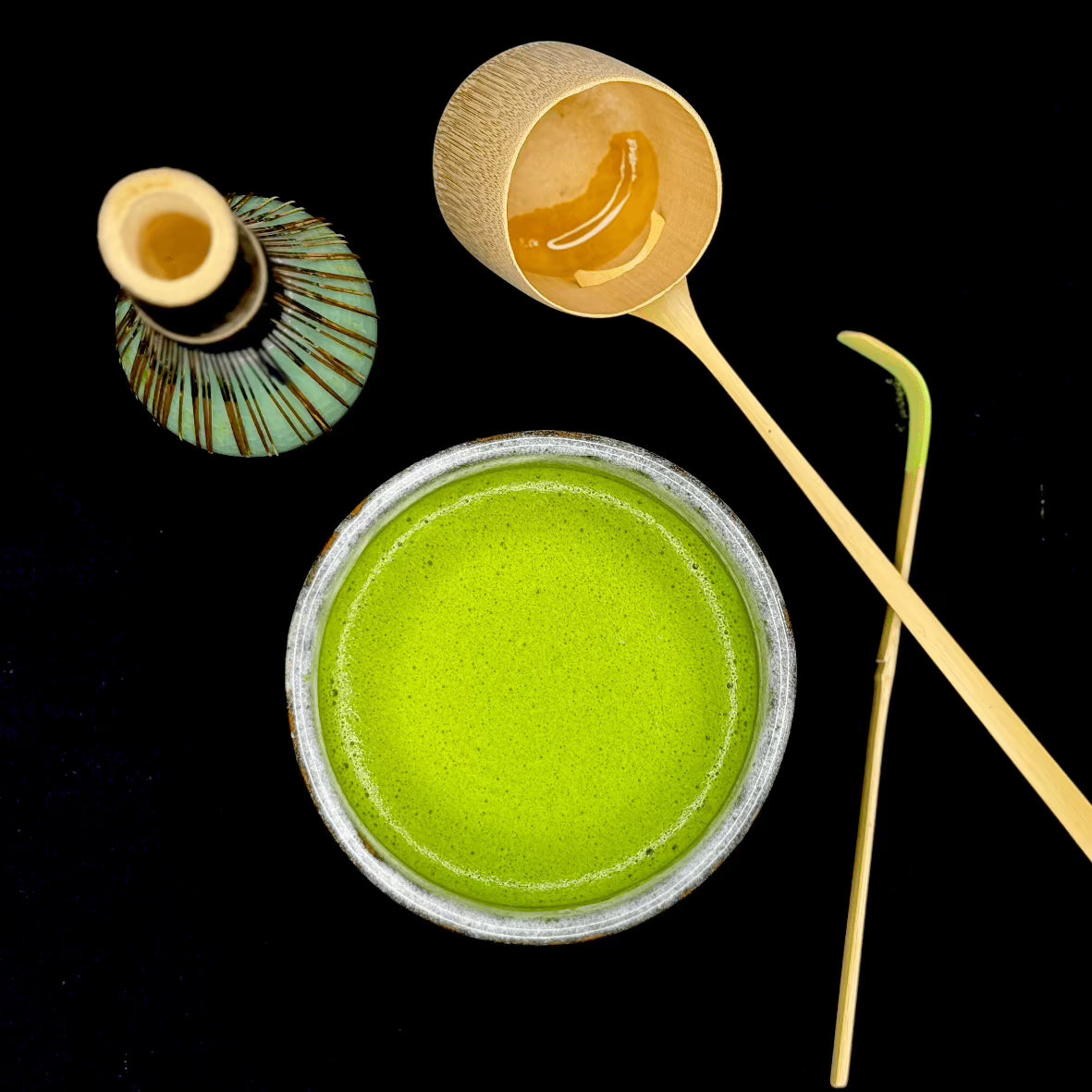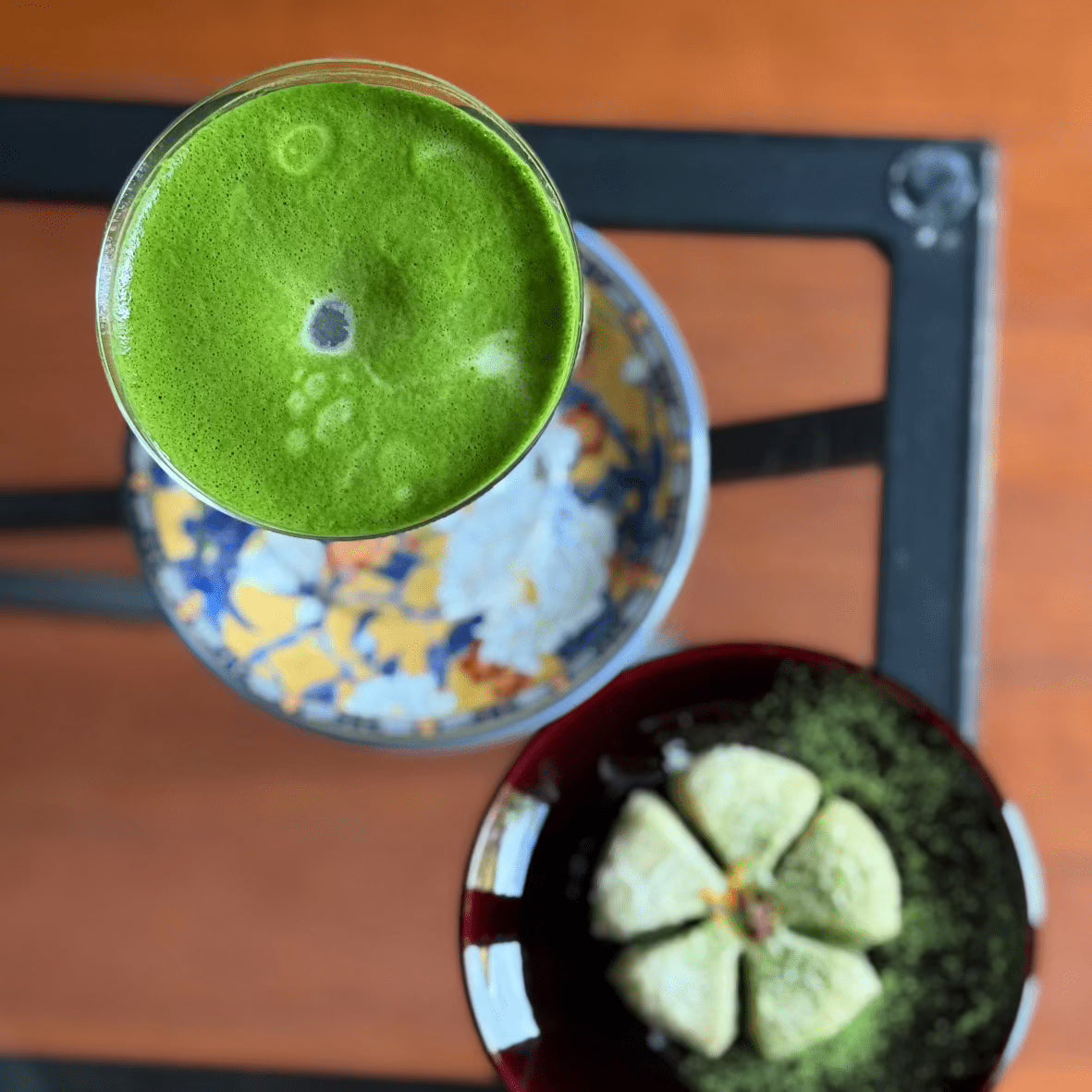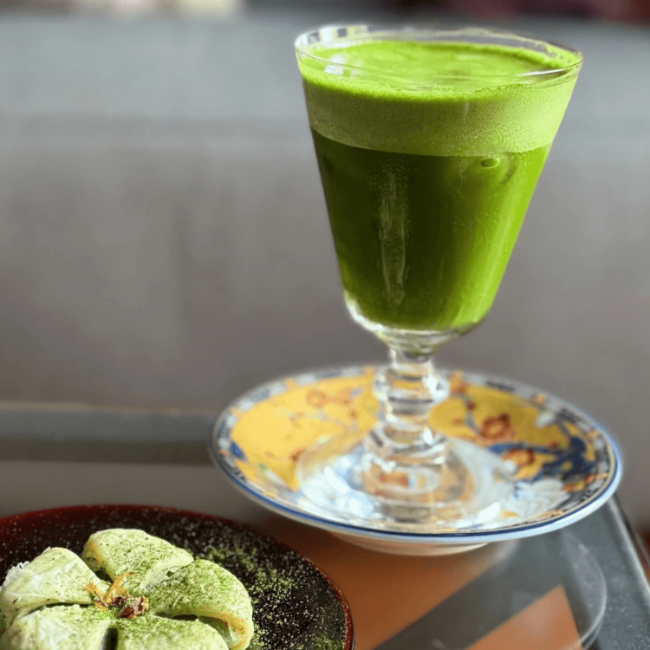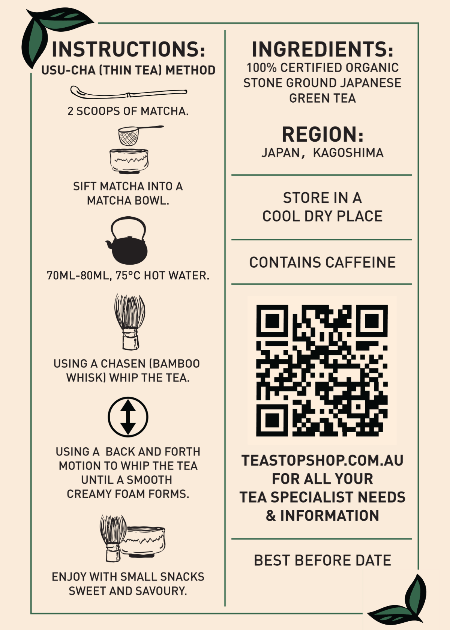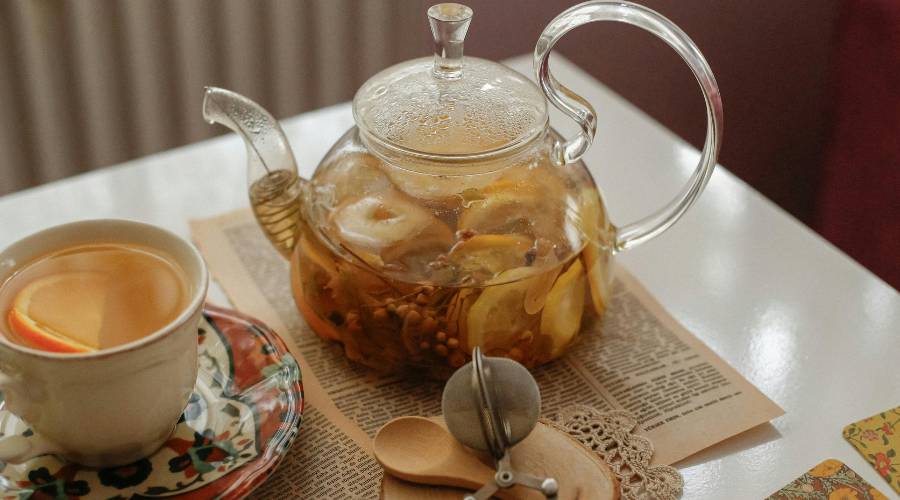
DIY Tea Blending: Create Your Signature Tea
Share
DIY tea blending has become a popular hobby among tea enthusiasts, offering the opportunity to create your signature tea with a personal touch. As you embark on this flavorful journey, you'll discover the joy of making your tea blends at home. This comprehensive tea blending guide will walk you through every step, from understanding different tea types to experimenting with unique flavors and aromas.
Whether you're a seasoned connoisseur or a curious beginner, crafting a homemade tea blend allows for endless creativity and personalization. We've curated a selection of premium loose leaf teas from Tea Stop Shop to use in your blends, renowned for their unmatched flavor and aroma. Feel free to explore these options or seek out other high-quality sources that suit your taste preferences.
Dive into this guide and unlock the secrets of DIY tea blending, where innovation meets tradition, and every cup tells a story.

Understanding Tea Types
To start your journey into DIY tea blending, it's important to understand the different types of tea available. There are two main categories: true teas and herbal teas.
True Teas
True teas include black, green, white, and oolong teas. They all come from the Camellia sinensis plant but have different processing methods that result in unique flavors and characteristics.
Here's a breakdown of each type:
- Black Tea: Known for its robust flavor and rich aroma. It's fully oxidized, resulting in a deep color and strong taste. Perfect for those who enjoy bold blends.
- Green Tea: Offers a fresh, grassy flavor. It is lightly oxidized and contains less caffeine than black tea, making it suitable for a refreshing blend.
- White Tea: The least processed of true teas, white tea has a delicate flavor profile. It's ideal for subtle blends that highlight soft notes.
- Oolong Tea: This semi-oxidized tea bridges the gap between black and green teas, providing a complex flavor that can be floral or fruity.
Herbal Teas
Unlike true teas, herbal teas are naturally caffeine-free options made from various plants, flowers, and spices. These infusions do not contain Camellia sinensis, offering diverse flavors without the caffeine kick.
When creating your tea blends, it's important to consider the health effects of the ingredients you're using. True teas contain caffeine and tannins—compounds that can affect individuals sensitive to caffeine or those monitoring their tannin intake. By being mindful of these factors and practicing moderation, you can enjoy the benefits of tea without overdoing it.
Essential Ingredients for Blending
Creating a memorable tea blend begins with understanding the ideal ratios. A successful mix typically consists of:
-
70% Base Tea: This forms the foundation of your blend. Options include robust black tea, delicate green tea, or soothing herbal infusions.
-
30% Complementary Flavors: These add depth and character to the base. Consider incorporating herbs like lemon balm for citrus notes or mint for freshness.
-
10% Accent Flavors: These are the final touch, providing a unique flair. Spices such as cinnamon or ginger can infuse warmth and complexity.
Choosing the right ingredients is crucial to achieving a harmonious balance. Experiment with different herbs and spices to discover combinations that resonate with your taste preferences. For instance, lavender can introduce a floral aroma, while cinnamon adds a comforting spice.
These carefully selected components work together to create a blend that is not only flavorful but also tailored to your liking. As you refine your blend, remember that each ingredient contributes to the overall sensory experience, enhancing both aroma and taste.
The Blending Process
Creating your tea blend is an art that involves careful measuring, thoughtful mixing techniques, and a touch of customization. Here's how you can start your DIY tea blending journey:
1. Measuring Your Ingredients
Accurate measurement is crucial for achieving the right balance in your blend. You can measure by volume using teaspoons or by weight with a kitchen scale. For precision, particularly with herbs and spices, weighing might be more effective. Remember the ideal ratio: 70% base tea, 30% complementary flavors, 10% accent flavors.
2. Mixing Techniques
Mixing your ingredients requires a gentle hand to ensure a uniform distribution of flavors. Use a large bowl and lightly toss the ingredients together. This method helps prevent crushing delicate leaves or herbs while ensuring that each scoop of your blend delivers consistent flavor.
3. Customization for Personal Taste
Your tea blend should reflect your unique preferences and desired health benefits. Whether you prefer a robust black tea with hints of cinnamon or a calming green tea with floral notes like lavender, adjust the components as needed. Experimentation is key; don't hesitate to tweak ingredient ratios until you find what pleases your palate most.
Embrace the creativity that comes with DIY tea blending, allowing yourself to explore different combinations and discover new favorites along the way.
Brewing Your Custom Blend
Achieving the perfect brew is crucial for bringing out the full flavor of your custom tea blend. Each type of tea has its specific brewing tips and steeping times that are necessary to unlock its unique qualities.
Black Tea:
- Use water heated to 90-100°C.
- Steep for 3-5 minutes to allow the robust flavors to develop fully.
- Strain and savor the rich aroma and deep taste.
Green and White Tea:
- Aim for a water temperature between 70-80°C.
- A shorter steeping time of 2-3 minutes helps maintain their delicate flavors and vibrant colors.
- Ensure you strain promptly to avoid bitterness.
Herbal Tea:
- Boil water at 90-100°C, similar to black tea.
- Steep longer, typically 5-7 minutes, to draw out the full spectrum of flavors from herbs and spices.
These methods ensure optimal flavor extraction, enhancing your enjoyment of each sip. Adjustments can be made to suit personal taste preferences, such as experimenting with shorter or longer steeping times for a more subtle or intense flavor profile. Always remember that the art of brewing is just as crucial as blending when it comes to crafting your signature tea experience.

Health Benefits of Tea Blends
Creating your tea blends not only allows for a personalized flavor experience but also offers potential health benefits. Key ingredients in these blends can provide a variety of positive effects.
1. Antioxidants
Many teas are rich in antioxidants, which help combat oxidative stress and contribute to overall health. Green tea, for instance, is renowned for its high content of polyphenols, which may aid in reducing inflammation and promoting heart health.
2. Immune Support
Incorporating herbs like echinacea into your tea blend can bolster immune function. Echinacea is often used to reduce the duration of colds and boost the body's natural defenses against infections.
3. Calming Effects
For those seeking relaxation, herbs such as chamomile are ideal. Chamomile is celebrated for its calming properties, helping to reduce anxiety and promote restful sleep. A cup of chamomile-infused tea before bedtime can be a soothing ritual.
4. Digestive Aid
Ingredients like ginger and peppermint are commonly used for their digestive benefits. Ginger is known for alleviating nausea and improving digestion, while peppermint can soothe an upset stomach and reduce bloating.
By understanding the unique properties of these herbs, you can tailor your tea blends to support specific health goals, making each cup both delicious and beneficial.
Presentation and Gifting Ideas
Creating a memorable presentation for your homemade tea blends can elevate the entire experience, whether for personal enjoyment or as a thoughtful gift. Packaging ideas play a crucial role in enhancing the visual appeal and perceived value of your DIY tea blending creations.
1. Glass Jars
Transparent glass jars showcase the vibrant colors and textures of your tea blends. Sealable lids keep the tea fresh while offering an elegant touch.
2. Tin Containers
Durable and reusable, tin containers provide a vintage look. They can be easily customized with labels or decorative stickers to match any occasion.
3. Kraft Paper Bags
Eco-friendly kraft paper bags are an excellent option for those who prefer a rustic aesthetic. Attach handwritten tags with brewing instructions to add a personal touch.
4. Gift Boxes
For a more lavish presentation, consider assembling a gift box. Include accessories like a tea infuser, honey sticks, or biscuits to create a complete tea-tasting experience.
Adding these elements not only enhances the presentation but also offers an opportunity to share your passion for tea blending with others.
Popular Recipes for Your Custom Blends
Creating your tea blends allows you to tailor the taste and aroma to suit your personal preferences. Here are some popular recipes that cater to different flavor profiles:
Floral Teas
-
Lavender Chamomile Bliss
- Base Tea: 70% chamomile
- Complementary Flavors: 20% lavender buds
- Accent Flavors: 10% rose petals
This blend offers a soothing, calming experience perfect for relaxation.
-
Jasmine Green Delight
- Base Tea: 70% jasmine green tea
- Complementary Flavors: 20% dried hibiscus
- Accent Flavors: 10% elderflower
A fragrant floral infusion that brings an elegant touch to your tea time.
Citrusy Mixes
-
Zesty Lemon Ginger
- Base Tea: 70% black tea (Earl Grey)
- Complementary Flavors: 20% lemon balm
- Accent Flavors: 10% dried ginger slices
Perfect for a refreshing morning boost with its citrusy zest and spicy warmth.
-
Citrus Mint Cooler
- Base Tea: 70% peppermint leaves
- Complementary Flavors: 20% lemongrass
- Accent Flavors: 10% orange peel
An invigorating blend that pairs the crispness of mint with vibrant citrus undertones.
Each recipe above can be adjusted based on your taste preference, allowing you to explore endless possibilities in your tea blending journey.
Conclusion
DIY tea blending opens up a world of creativity and joy. Experimenting with different flavors, aromas, and textures allows you to craft a truly personalized tea experience. The satisfaction of brewing a blend that perfectly suits your taste is unmatched.
Explore Quality Ingredients: For premium loose leaf tea in Australia, consider sourcing from Tea Stop Shop. Their selection of organic teas provides a fantastic base for your blends, ensuring every sip is full of flavor and health benefits.
The journey into DIY tea blending not only enriches your daily routine but also offers an opportunity to share this newfound passion with friends and family through beautifully packaged gifts. Embrace the art of tea blending and make each cup a unique reflection of you!
FAQs (Frequently Asked Questions)
What is DIY tea blending and why is it popular?
DIY tea blending is the art of creating your signature tea blends at home, allowing for a personalized experience tailored to your taste preferences. Its popularity stems from the joy of experimentation, creativity, and the ability to enjoy unique flavors and health benefits.
What types of tea can I use for blending?
You can use true teas such as black, green, white, and oolong, as well as herbal teas which are caffeine-free. Each type has its characteristics that can enhance your custom blends.
What is the ideal ratio for ingredients in a tea blend?
A recommended ratio for a balanced tea blend is 70% base tea, 30% complementary flavors, and 10% accent flavors. This ensures a harmonious flavor profile in your homemade tea.
How do I brew my custom tea blends for optimal flavor?
Brewing instructions vary by tea type; for example, black teas typically require boiling water and longer steeping times compared to herbal teas. Follow specific brewing guidelines to ensure maximum flavor extraction.
What health benefits can I expect from my tea blends?
Tea blends can offer various health benefits depending on the ingredients used. For instance, echinacea may support immune health while chamomile can provide calming effects. Incorporating these herbs into your blends can enhance their wellness properties.
How can I package my homemade tea blends for gifting?
Creative packaging ideas include using glass jars with decorative labels or fabric pouches tied with twine. Attractive presentation not only enhances personal use but also makes for thoughtful gifts.
